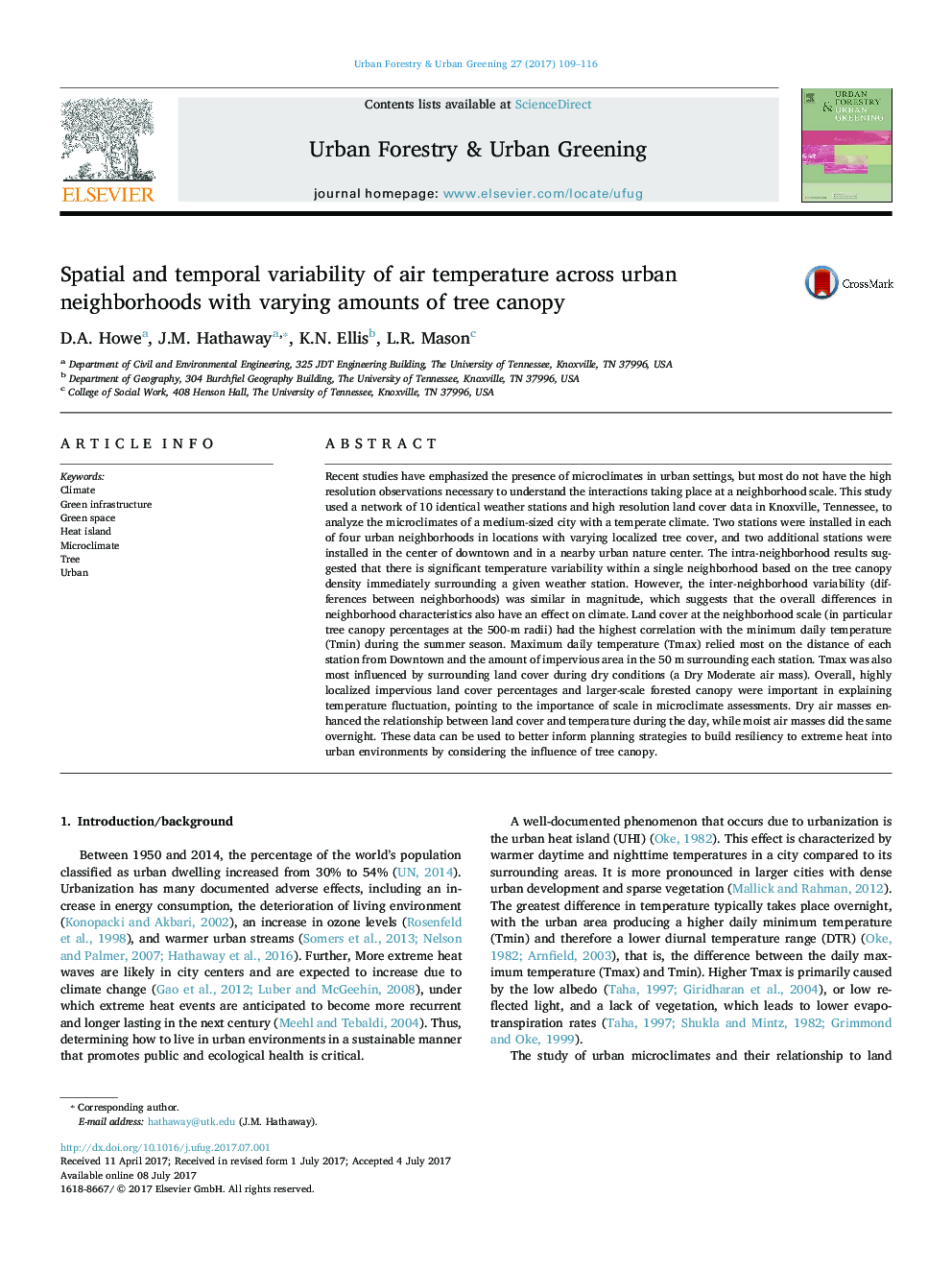| Article ID | Journal | Published Year | Pages | File Type |
|---|---|---|---|---|
| 6461709 | Urban Forestry & Urban Greening | 2017 | 8 Pages |
â¢Urban micro-environments exist, in part, due to land cover heterogeneity.â¢Intra-neighborhood locations with more tree canopy have lower median temperatures.â¢The influence of tree canopy on median temperature is strongest during the summer.â¢Dry air masses enhance relationships between land cover and temperature.
Recent studies have emphasized the presence of microclimates in urban settings, but most do not have the high resolution observations necessary to understand the interactions taking place at a neighborhood scale. This study used a network of 10 identical weather stations and high resolution land cover data in Knoxville, Tennessee, to analyze the microclimates of a medium-sized city with a temperate climate. Two stations were installed in each of four urban neighborhoods in locations with varying localized tree cover, and two additional stations were installed in the center of downtown and in a nearby urban nature center. The intra-neighborhood results suggested that there is significant temperature variability within a single neighborhood based on the tree canopy density immediately surrounding a given weather station. However, the inter-neighborhood variability (differences between neighborhoods) was similar in magnitude, which suggests that the overall differences in neighborhood characteristics also have an effect on climate. Land cover at the neighborhood scale (in particular tree canopy percentages at the 500-m radii) had the highest correlation with the minimum daily temperature (Tmin) during the summer season. Maximum daily temperature (Tmax) relied most on the distance of each station from Downtown and the amount of impervious area in the 50Â m surrounding each station. Tmax was also most influenced by surrounding land cover during dry conditions (a Dry Moderate air mass). Overall, highly localized impervious land cover percentages and larger-scale forested canopy were important in explaining temperature fluctuation, pointing to the importance of scale in microclimate assessments. Dry air masses enhanced the relationship between land cover and temperature during the day, while moist air masses did the same overnight. These data can be used to better inform planning strategies to build resiliency to extreme heat into urban environments by considering the influence of tree canopy.
